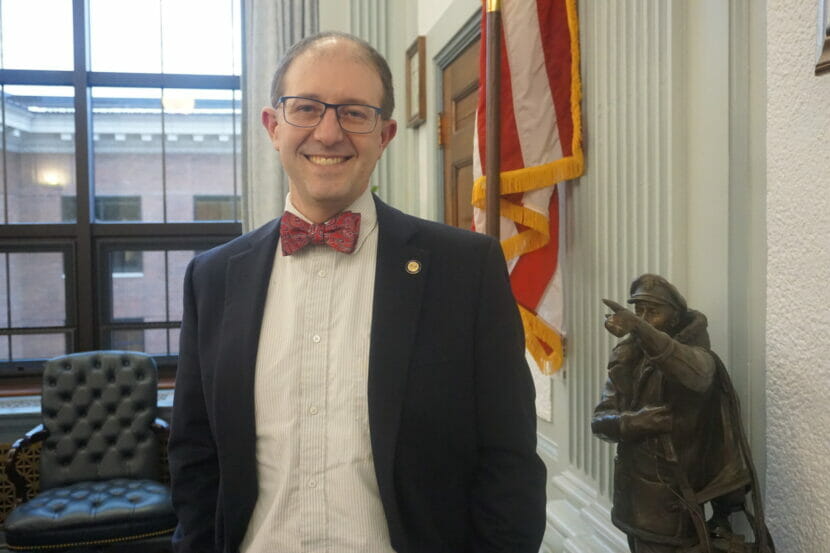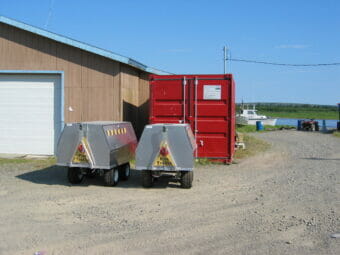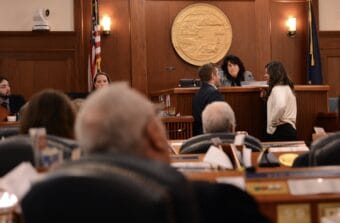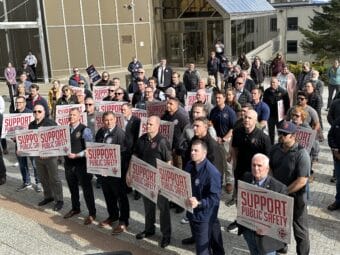
The Alaska Senate on Monday unanimously approved a bill that would mandate an end to the use of firefighting foams containing the long-lasting and health-damaging compounds known as forever chemicals.
Senate Bill 67 requires use of PFAS-containing foams end on Jan. 1, unless otherwise required by federal law. The foams are generally used in airport fire departments, and contamination of communities around the nation and in Alaska has often been linked to airports.
The bill is aimed at stopping the spread of compounds that are “bad for people at incredibly small concentrations,” the bill’s sponsor, Sen. Jesse Kiehl, D-Juneau, said in floor remarks.
The bill does not address all the problems created by PFAS contamination, but it does work to keep things from getting worse, Kiehl said.
“This isn’t a cleanup bill. This is a no-new-spills bill,” he said.
For airport safety, Kiehl said, there are firefighting foams now available and proved to be effective that do not contain PFAS compounds. However, that may not yet be the case for oil facilities, he said. For that reason, the bill delays an effective date for curtailment of PFAS-containing foams by oil facilities, such as the Trans-Alaska Pipeline System terminal in Valdez, until the state fire marshal makes a determination that alternatives are suitable.

The expected cost of the bill is $2.55 million in capital expenditures, plus $185,000 in operating expenses in the first fiscal year, diminishing to $160,000 in operating expenses by the fourth fiscal year and nothing after that, according to the fiscal note submitted by the Alaska Department of Transportation and Public Facilities.
Part of that cost comes from the bill’s requirement that the state collect for proper disposal up to 40 gallons a year of PFAS foams, Kiehl said. That is a tiny quantity for a major facility like the Juneau airport, but it is significant for more than 130 small communities, most of them rural, with volunteer fire departments that do not have the wherewithal to send their accumulated foams to appropriate hazardous waste sites, he said.
Many of those communities have PFAS foams in what are known as code red kits — portable firefighting units sent to them by the state about 20 years ago. Those foams are now at risk of spilling or leaking or otherwise spreading in those communities, Kiehl said.
“If we were not to take back those foams and dispose of them properly, the cost of cleanup would choke a horse. Certainly, it makes this fiscal note look like pennies,” he said.
The Senate bill now moves to the House for consideration. Meanwhile, a House version, House Bill 166, passed out of the House Labor and Commerce Committee on Friday.

Per- and polyfluoroalkyl substances, collectively known as PFAS, have been used since the 1950s in a variety of consumer and industrial products. They have been linked to cancers, fetal abnormalities, reproductive problems, metabolic disorders and other health ills, according to the National Institute of Environmental Health Science. However, they have become ubiquitous in the environment. One national study found them in the blood of 97% of the people tested. Another study, by Alaska Community Action on Toxics, found varying levels in several widely used Alaska waterways in Anchorage and Fairbanks. PFAS substances are notable for being extremely difficult to break down; they do not degrade in the environment.
Both the Alaska Department of Environmental Conservation and the federal Environmental Protection Agency have plans to prevent further spread of PFAS substances into the environment or to try to remove them. The EPA in March proposed some new federal drinking water standards for PFAS, and the Alaska DEC, which is coordinating with federal regulators, has a state PFAS action plan that includes cleanup standards for contaminated sites.



